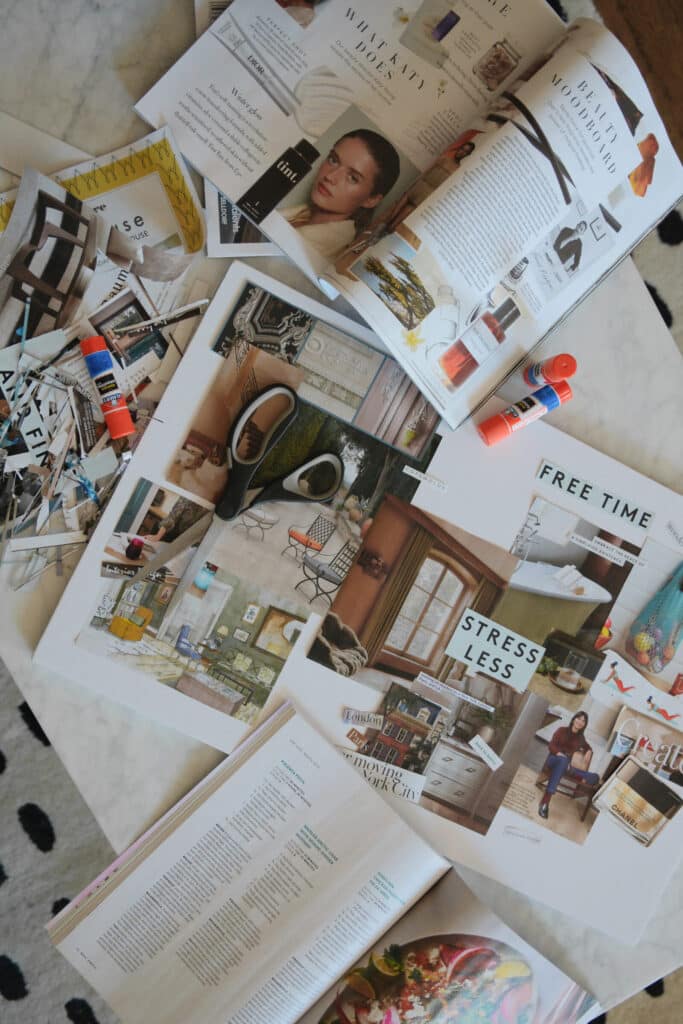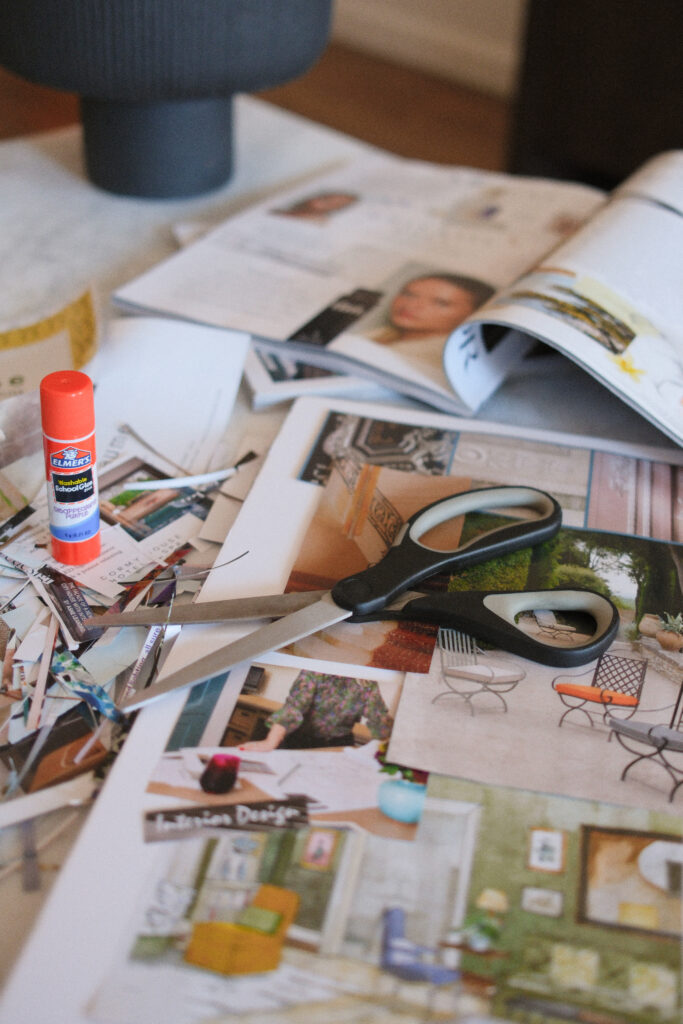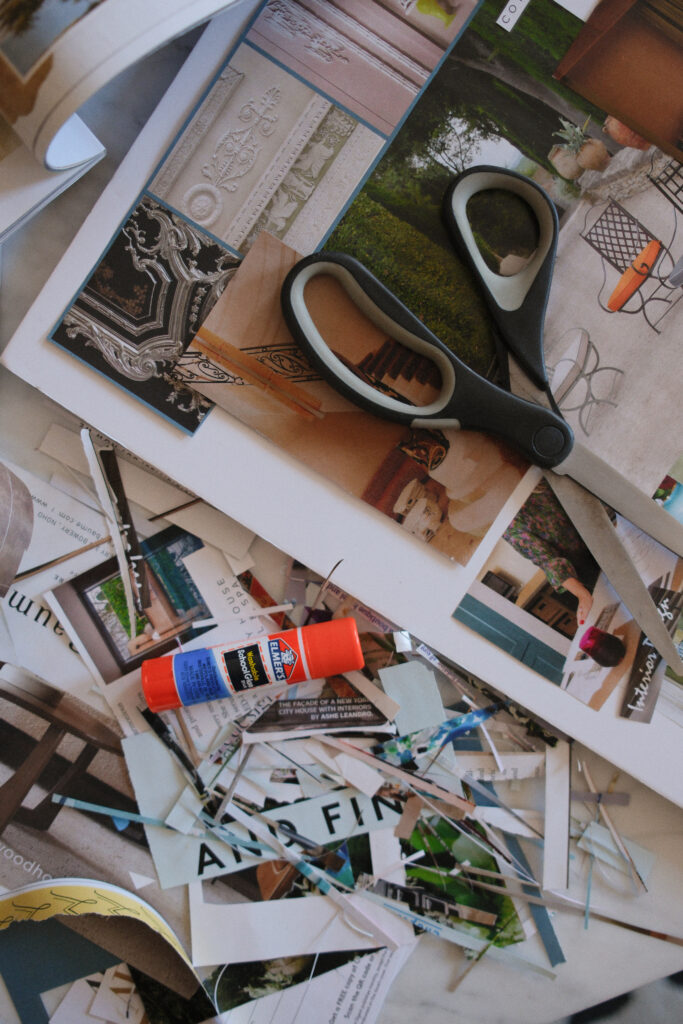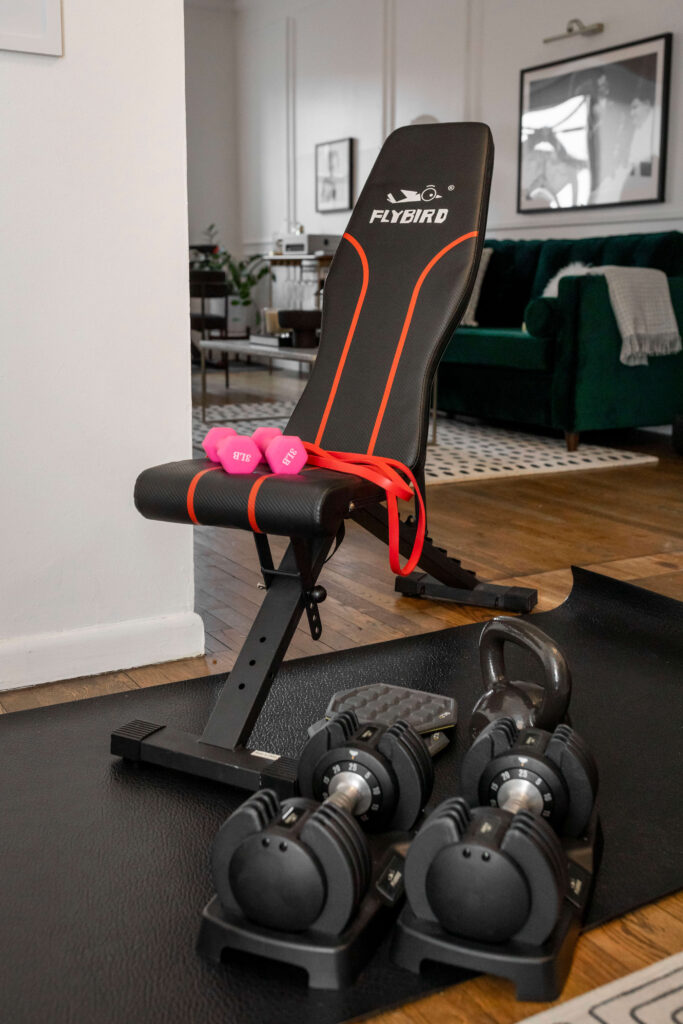In an over-stimulated world that seems to be advocating that you be doing the most, it can feel difficult to drown out the noise to focus on yourself and the things you want for your professional or personal life.
I’ve never been a big resolutions person, but when it comes to setting goals and dreaming of my best life and the things I aspire to have, that’s something I fully embrace.
Just like a good morning or nighttime routine creates structure to your days, setting goals and imagining the best version of yourself provides clarity and direction to your overall life. One of the most powerful tools to bring this vision to life is, you guessed it, a vision board.
A vision board not only provides a visual representation of your short-term and long-term goals, it can also serve as inspiration during tough times, motivating you and offering guidance when you need it most. A personal internal compass, if you will.
Ultimately, vision boards work because they are a daily reminder of what you want and why you want it. With each look at your board, your mind reorients itself toward growth, opportunity, and alignment with your ideal life. By continuously engaging with your vision board, you’re priming your brain to act, seek, and create the future you visualize.
While creating a vision board can feel intimidating if you’re not sure where to start, don’t worry—below I’m sharing a simple step-by-step guide to craft a vision board that aligns with your unique personality and goals.
Dream big, get creative, and embrace an abundance mindset. These are the first strides toward manifesting and achieving the life you desire.

How to Make a Vision Board
Understanding what a vision board is and how it works can be a game-changer in your journey to creating a life you want. By the end of this post, you’ll have a clear plan to create your inspiration board and keep your goals top of mind every day.
What Is a Vision Board?
A vision board is a collection of images, words, quotes, and anything else that represents your dreams and aspirations in different areas of your life, both personal and professional. It can be done digitally, or you can create a paper vision board with a glue stick and cutting out magazine clippings. Some people call it a dream board or goal board, but they are all the same thing.
How Do Vision Boards Work?
At their core, vision boards are a visualization tool designed to bring clarity, focus, and intention to your goals. You’re creating a visual roadmap that communicates your values, priorities, and aspirations back to you every single day.
I keep a photo of my own vision board as the screensaver on my phone. Every time I pick it up, I have a constant reminder of the personal and professional goals I’m working toward.
Visualization Makes Goals Concrete
Vision boarding helps transform vague intentions into clear, specific targets. When a goal becomes visually defined, your brain treats it as more tangible and attainable. This improved clarity naturally leads to better planning, stronger effort, and more persistence. It’s the same principle behind why handwritten notes stick in our memory more than typed ones, or why you can better remember a task written in your daily planner instead of saved in your phone. That’s the similar case with a vision board: what we physically see and engage with becomes more deeply ingrained. Vision boards tap into this mechanism by giving your goals a literal place to live.
Aligns Goals With Inner Motivations
A 2024 study found that when your goals align with what genuinely matters to you, you experience more positive emotions and more consistent progress. This is called self-concordance. The act of curating images naturally forces you to choose what truly resonates with you.
Rewires Your Brain Through Repetition
One of the most powerful things a vision board does is activate your reticular activating system (RAS). This is the part of your brain that filters information and helps you notice opportunities that align with your goals. When you regularly see images of the life you want, your brain becomes trained to recognize people, ideas, and situations that can help you achieve it. Over time, your daily exposure to your own vision board reinforces your intentions, making it easier to stay motivated and aligned with the future you’re creating.
Action Is the Real Magic
It’s important to note that you shouldn’t just expect your vision board ideas to magically appear. Instead, it’s about constantly seeing your dreams and goals so clearly that you can recognize opportunities to achieve them, whether that’s budgeting differently, leveling up professionally, or changing your daily habits.
How to Create a Vision Board
Let’s break down the steps on how to create your vision board. Making one isn’t complicated, and although all vision boards share the same fundamentals, they are completely custom to your goals and vision for any area of your life.
Step 1: Reflect on Your Goals
Regardless of whether you choose to make a physical or digital vision board, starting your vision board requires one thing: intention.
Visualize your goals for a few areas of your life. This could be personal relationships, physical or mental health, or perhaps you’re focusing on how you’ll achieve your dream job in the future.
Goals should be specific, measurable, achievable, relevant, and time-bound. But goals can also be an imaginative stretch – so long as you can put forward some kind of action step that takes you closer to them.
I recommend asking yourself a few questions about your life:
- What are my biggest dreams?
- What does my ideal day look like? Think about your location, the people around you, where you’re working, what you’re eating, etc.
- What goals do I want to achieve in the next year?
Creating a vision board can feel overwhelming at first. However, it’s most impactful when it focuses on either a single or limited number of specific goals. Or it’s a clear vision of what you want your life to look like within a certain timeframe. Jot down your thoughts and use them as a guide when starting your vision board.
This is a fundamental step in in the process, so don’t rush it. In fact, I advocate that you take quiet time, or even a few days to really sit with your thoughts, determine the area of growth that matters most to you right now. And dedicate your vision board to supporting progress in that direction.
Step 2: Gather Your Materials
Decide whether you want to create a physical board or a digital one. Although a digital board can be quicker to find photos and easier to save as a phone or computer background, there’s something about the tactile component a physical vision board provides that you just can’t get elsewhere. I prefer creating physical boards because in an age where everything is done on a screen, making a board “the old fashioned way” gets me off the computer and gives me something to make with with my hands. It also requires that my brain get more creative to find the perfect visuals instead of simply Googling what I want for instant gratification.
If you are really adamant about creating a digital board, I recommend using Canva to create a collage just as you would with paper; part of the beauty of a vision board is seeing everything you want at once instead of a Pinterest board that requires scrolling and doesn’t feel as connected.


For a physical vision board, you’ll need a few basic items:
- A piece of poster board or cork board
- Magazines, printouts, or access to online images (and a printer) that represent your goals
- Scissors, glue stick, tape, or pins
- Markers or pens to add words that represent your intentions
When purchasing magazines, buy a variety in different genres; you never know where you may find the perfect addition for your goals board.
If you’re creating a digital vision board, gather images online that resonate with your aspirations. Pinterest is always a great place to start, but you can also search Google, blogs, and even Instagram for inspo.
Step 3: Select Words and Images That Represent Your Goals
Start flipping through magazines or search online and make a pile of things that represent your aspirations, objectives, and goals. These can be pictures, quotes, and words that inspire you.
For example, I really love cooking and trying new recipes. But over the last couple of years this has fallen to the back burner for me. Visuals that align with “find joy again in cooking” could include photos of fresh vegetables or someone cooking dinner. As well as an article quote from Julia Child, the Food Network logo, or the recipe of my favorite comfort meal.
Step 4: Arrange Your Board
Once you have your images and words that align with your overall goals, it’s time to arrange them to your board. You can break your board up into sections to group similar themes together. Or intertwine everything so that it’s a visually appealing collage of images. Play around with the layout until it feels just right.
When your board looks like how you want it, glue, tape, or pin your items to your surface. For digital vision boards, don’t forget to hit save on all that hard work!
Step 5: Display Your Vision Board Where You Can See It
Don’t just shove your vision board away in a drawer. The most critical component of vision boarding is viewing your board every day so you stay focused and motivated to achieve your goals.
Place your vision board wherever you’ll see it daily: at your office, behind your computer, or by your bed, or even in your closet. If you made a digital board, save it as your desktop and phone background. This is my favorite way to see my board. I pick up my phone a lot throughout the day, so I’m constantly looking at my goals even I’m doing something else.








